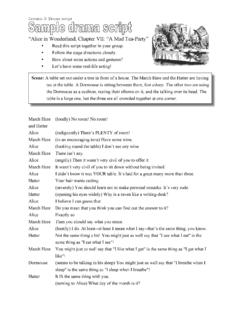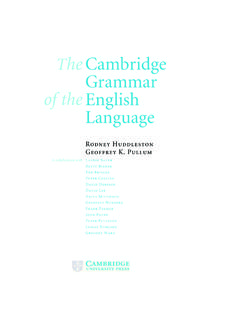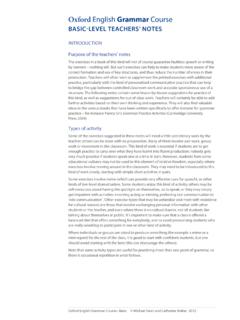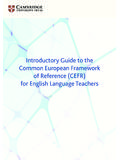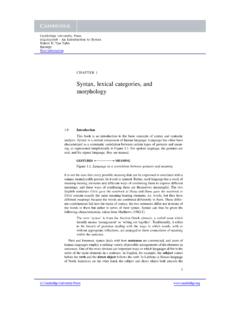Transcription of Rules, Patterns and Words Grammar and Lexis in English ...
1 rules , Patterns and WordsGrammar and Lexis in English language TeachingRules, Patterns and WordsGrammar and Lexis in EnglishLanguage TeachingDave WillisPUBLISHED BY THE PRESS SYNDICATE OF THE UNIVERSITY OF CAMBRIDGEThe Pitt Building, Trumpington Street, Cambridge, United KingdomCAMBRIDGE UNIVERSITY PRESSThe Edinburgh Building, Cambridge cb2 2ru, UK40 West20th Street, New York, ny 10011-4211, USA477 Williamstown Road, Port Melbourne, vic 3207, AustraliaRuiz de Alarc n 13,28014 Madrid, SpainDock House, The Waterfront, Cape Town 8001, South Cambridge University Press 2003 This book is in copyright. Subject to statutory exception and to the provisions of relevant collective licensing agreements, no reproduction of any part may take place without the written permission of Cambridge University published 2003 Printed in the United Kingdom at the University Press, [od&i]A catalogue record for this book is available from the British LibraryLibrary of Congress Cataloguing in Publication dataLibrary of Congress data applied 521 82924 0hardbackISBN0 521 53619 7paperbackCONTENTSA cknowledgementsviii1 What is taught may not be what is learnt.
2 1 Some preliminary questions about questions about questions about questions about and Lexis and Grammar of Grammar of phrases and a teaching and communicative focus and learning Grammar of : Structure and noun verb Grammar of orientation: The verb is orientation? traditional pedagogic description of the systematic the grammatical : Organising and indefinite grammatical for organising phrases and is a lexical phrase? and sentence learners aware of lexical phrases and : The and and and : Class and the lexical syllabus1849 The Grammar of spoken and written language : Some the spoken final learning and language Learning how to mean communicative description and learning for integrated for syllabus the meantime.
3 225 References227 Subject index229 Name index238 ContentsviiWhenever we do anything in the classroom we are acting on our beliefsabout language and language learning. If we ask learners to listen andrepeat a particular sentence, we are acting on the belief that suchrepetition is useful enough to justify the valuable classroom time it takesup, perhaps the belief that it helps rote learning which in turn promotesgeneral language learning. If we give learners grammatical rules orencourage them to discover rules for themselves, we are acting on thebelief that rules make a valuable contribution to language descriptionand that this kind of understanding helps promote beliefs about language learning and teaching are shaped by ourtraining, but also by our classroom experience.
4 Unfortunately, learningfrom experience is not always easy. teaching is such an absorbingbusiness that it is difficult to stand back and ask appropriate questionsabout what is happening in the own experience as a language teacher and also as a learner suggests to me that learning a language is a much more complex anddifficult process than we would like to think. We need to look verycarefully at some of the assumptions we make about language learningand about language itself. A first step is to look at what happens inclassrooms, and to identify some of the questions that need to be asked. In the classroom teachers often act on the assumption that languagelearning is a matter of learning a series of Patterns or gradually add to their stock of structures until they have ausable model of the language .
5 They often start with the present tense ofbe,and soon they are exposed to the definite and indefinite articles. Ata later stage we add the passive voice and reported speech, and continueuntil we reach the dizzy heights of the third conditional. The syllabus ispresented to learners in a logical order and the language is built uppiece by piece until learners have achieved a usable competence, a formof the language which meets their teachers, however, we observe that learning proceeds in a muchless predictable manner. What is taught is often not learnt, and learnersoften learn things which have not been taught at all. Learners oftenproduce sentences such as: I am studentorMy father is engineer even1 What is taught may not be what is learnt:Some preliminary questions1though they have never been taught this, and even though theirconscientious teacher is at pains to point out that the definite article isrequired here: You are astudent; Your father is anengineer.
6 Oftenlearners persist in these errors for a long time, in spite of is frustrating for both learners and teachers, but the full pictureis even more complicated than this. Learners soon reach a stage atwhich they produce accurately: I am astudentwhen they are thinkingcarefully about the language ; but when they are producing languagespontaneously, or when their attention is drawn to another feature ofthe language , they continue to produce: I am student. There are, itseems, two kinds of learning. One of them has to do with learning tomake sentences. Learners think hard about what they are doing andproduce thoughtful, accurate samples of the language .
7 The second kindof learning has to do with learning to produce language spontaneously,without conscious attention to detail. What learners producespontaneously is often very different from what they produce when theyare concentrating on making up against this phenomenon time and time again in ourclassroom practice. We constantly observe instances where learnersmake errors which they are easily able to correct once they are pointedout. And we also observe, time and time again, that the same errors arerepeated, even after they have been pointed out. This is one of thecentral puzzles in language teaching : how is it that learners can knowsomething, in the sense that they are well aware of it when they aremaking sentences carefully and attentively, but at the same time notknow it when they are producing language spontaneously?
8 In this chapter I will look first at my own experience in a class onquestion tags: why is it that these tags, which are relatively easy toexplain, are so difficult for learners to master? I will then look atquestion forms in general: why do learners go on getting these wrongfor so long even after they have understood the rules for questionformation? The way learners go about learning question forms raisesquestions about learning in general I will highlight some of thesequestions and speculate on possible Some questions about tagsMy first teaching job was at a secondary school in Ghana, West Ghanaian students, who did not share a common first language ,were learning English as a second language .
9 They had not acquiredRules, Patterns and Words2 English as their first language at their mothers knees. Most of them hadtheir first contact with English in primary school, and by the time theyreached secondary school nearly all of their lessons were taught throughthe medium of English . Their spoken English , however, was a dialectform which was very different from standard British English . They usedthis dialect not only in the classroom, but also when speaking to fellowstudents who came from another language group. Sensible languages have a single form for question tags. French hasn est-ce pas?;Greek has ? (dhen eeneh?); Spanish uses verdad?orno?Unlike these sensible languages English has a wide range ofquestion tags:We ve met before, haven t we?
10 You ll be there on time, won t you?They can do it, can t they?But in the dialect of English used by my Ghanaian students there wasonly one tag, as in French and Greek:We ve met before, isn t it?You ll be there on time, isn t it?They can do it, isn t it?This tag is a form which is also often used by learners of English as aforeign language . It is even used by some native speakers of English We ll see you tomorrow, innit?Unfortunately my Ghanaian students were supposed to be learningstandard British English . In their examinations they would be tested onstandard British English including the entire range of question , for some reason best known to themselves, examiners love to testquestion tags.


